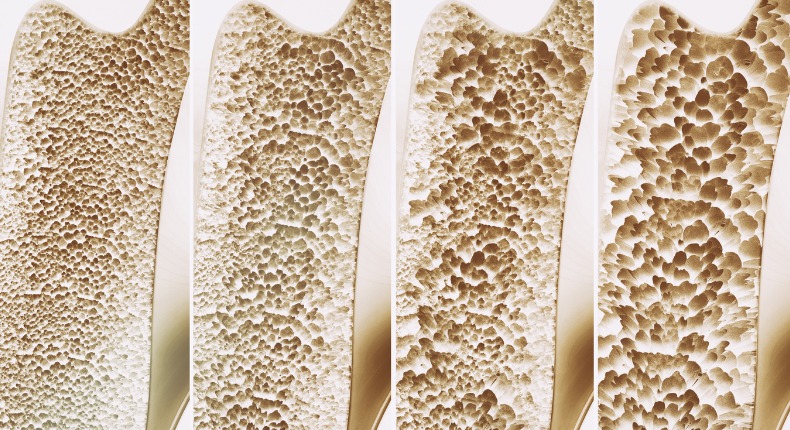Osteoporosis is the most common chronic metabolic bone disease, and it’s characterized by increased bone fragility. According to a 2017 study, more than 200 million people suffer from osteoporosis, and 1-in-3 women over age 50 and 1-in-5 men will experience osteoporosis-related fractures in their lifetime. If you have family members (parents or grandparents especially) who have or have had osteoporosis with or without fracture, consider yourself at risk for the condition. Because a serious fracture can significantly affect an older adult’s health and ability to remain independent, it’s important to understand the disease so that it can be caught and treated early in its course.
Bone mineral density is assessed by dual energy X-ray absorptiometry (DEXA), which uses x-rays to calculate the amount of minerals—namely calcium—in the bones. The findings are provided as a T-score and a Z-score. The T-score is a comparison of your bone mineral density vs. a healthy, young adult of the same sex (when bone density is at its peak). A score of “0” means your BMD is equal to that of the young adult. Anything less is expressed in units called standard deviations (SDs). Osteopenia, or low bone mineral density, is defined as -1 to -2.5 SDs while osteoporosis is defined as lower than -2.5 SDs. In other words, as the negative number lowers/worsens, the lower/worse the bone mineral density and the higher the fracture risk. The Z-Score compares you to others of similar age and sex. An assessment by your medical physician, an endocrinologist, and/or rheumatologist is typically needed to get a DEXA scan. A baseline or early DEXA scan around age 50 is recommended to be used as a comparison for later, follow-up DEXA scans.
The Fracture Risk Assessment Tool (FRAX) is a free online tool that estimates your risk of having a hip or other major fracture in the next ten years. The FRAX is usually administered by a healthcare provider (ask your chiropractor about this) and is used when the following conditions are met: 1) osteoporosis is diagnosed; 2) osteoporosis medication is not currently being taken; and 3) men are above age 50 or women who are post-menopausal. The FRAX score calculator will ask you several questions about habits such as alcohol intake and other disorders that are linked to osteoporosis, such as type 1 diabetes. The online tool will then calculate your FRAX score and provide strategies to help reduce the risk of fracture.
While it’s natural for bone mineral density to fall with after age 50, there are strategies that may help build and maintain stronger bones such as a healthy diet, such as the Mediterranean diet; pounding exercises, like walking or jogging; proper sleep (seven-to-eight hours a night), strength training; and maintaining adequate vitamin D levels. If aches and pains are getting in the way of a healthy, active lifestyle, then schedule a visit with your doctor of chiropractic.



